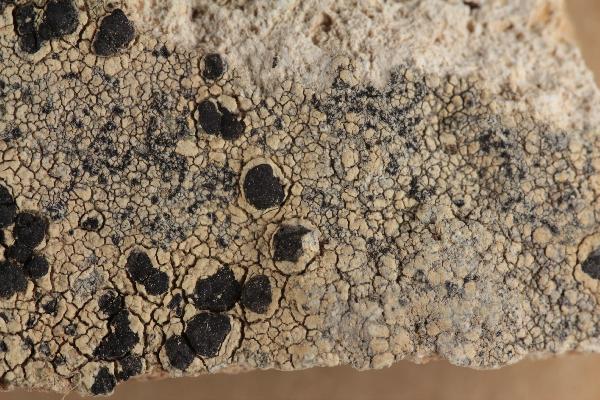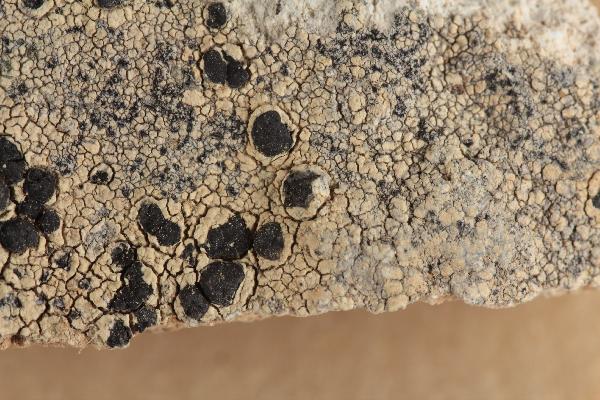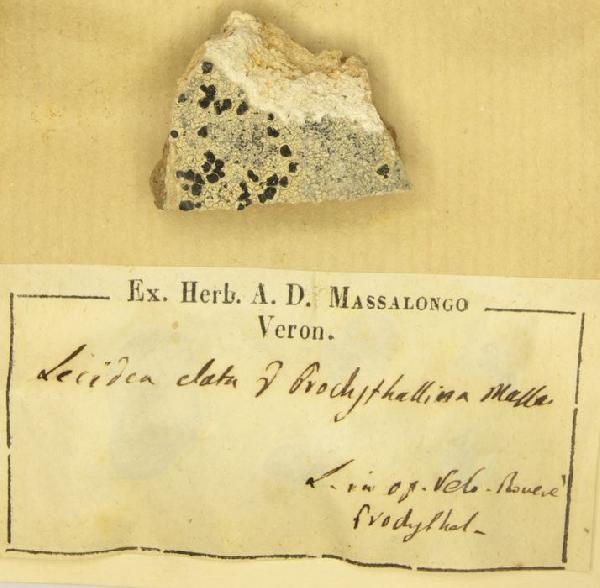Porpidia speirea (Ach.) Kremp. var. prochsthallina (A. Massal.) Clauzade & Cl. Roux ex Hafellner & Türk
Stapfia, 76: 155, 2001. Basionym: Lecidea elata var. prochsthallina A. Massal. - Ric. Auton. Lich. Crost.: 77, 1852.
Synonyms: Lecidea speirea (Ach.) Ach. var. prochsthallina (A. Massal.) Hertel
Distribution: N - Ven.
Description: Thallus crustose, episubstratic, continuous to rimose, pale yellow, rarely delimited by a thin dark prothallus. Medulla white, I+ blue. Apothecia lecideine, black, 1-2 mm across, at first semi-immersed in the thallus, then broadly sessile, often separated from the thallus by a circular crack or surrounded by a thalline rim, with an initially flat, then strongly convex, not umbonate, usually epruinose disc and a thin, epruinose, finally often excluded proper margin. Proper exciple, when young, with a broad marginal black layer and a narrow inner colourless layer of radiating hyphae, the latter progressively disappearing, leaving a thin, black-brown exciple reacting K-; epithecium brownish green to green-black; hymenium very pale yellowish green to colourless, 70-100 µm high; paraphyses coherent, branched and anastomosing in upper part, 1.5-2.5 µm thick at mid-level, the apical cell to 3.5 µm wide; hypothecium brown-black. Asci 8-spored, elongate-clavate, with a thin, outer amyloid layer and a thickened tholus penetrated by a pore, the sides of which are strongly amyloid, Porpidia-type. Ascospores 1-celled, hyaline, ellipsoid, c.15-20 x 6-8 μm, not halonate. Spot tests: cortex and especially medulla K+ bright yellow, C-, KC-, P+ pale yellow. Chemistry: unknown, but probably with confluentic acid as a major substance, plus other unknowns.Note: a taxon described from Veneto, differing from var. speirea in the pale yellow thallus reacting K+ yellow, growing on calcareous schists; widespread in the Holarctic region but rare throughout the Alps.
Growth form: Crustose
Substrata: rocks
Photobiont: green algae other than Trentepohlia
Reproductive strategy: mainly sexual
Commonnes-rarity: (info)
Alpine belt: very rare
Subalpine belt: very rare
Oromediterranean belt: absent
Montane belt: extremely rare
Submediterranean belt: absent
Padanian area: absent
Humid submediterranean belt: absent
Humid mediterranean belt: absent
Dry mediterranean belt: absent

Predictive model

Collezione lichenologica Abramo Massalongo del Museo di Storia Naturale G. Ligabue di Venezia - Autori: Seggi, Linda; Trabucco, Raffaella Proprietà: Fondazione Musei Civici di Venezia - CC BY-NC
Italy, Veneto, in op. Velo Roverè, Prochsthal
Growth form: Crustose
Substrata: rocks
Photobiont: green algae other than Trentepohlia
Reproductive strategy: mainly sexual
Commonnes-rarity: (info)
Alpine belt: very rare
Subalpine belt: very rare
Oromediterranean belt: absent
Montane belt: extremely rare
Submediterranean belt: absent
Padanian area: absent
Humid submediterranean belt: absent
Humid mediterranean belt: absent
Dry mediterranean belt: absent

Predictive model

 DOLICHENS
DOLICHENS



